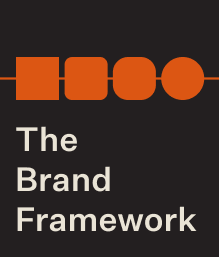At Circa, we build brands designed for growth. Whether you’re launching something new, evolving your services, or trying to keep pace with rapid market change, our four-stage process ensures your brand becomes a strategic asset—not a marketing cost.

Growth Requires Clarity
Growth is what keeps organizations alive. It’s exciting, but it’s hard. Growth means change and change is difficult on processes and people.
A great brand not only promotes business growth, it provides clarity on where an organization is going and how it can get there.
Think of your brand as a tool for growth. It should provide a clear vision that matches your customer’s pain points to the value you provide. It should give you the tools to support your people and process as the market evolves or your business changes. It should connect your sales, communications, and marketing teams with shared resources.
Circa’s brand framework breaks down the brand process into four stages allowing organizations of any size to optimize their brand for meaningful and measured growth.
Stage 1: Alignment
a·lign·ment
a position of agreement or alliance.
Great brands connect core business values to market needs. Alignment is all about clarity across teams and objectives.
This first stage can involve any level of research, audit, analysis, and strategy. The measure of these depends on the risk versus opportunity. For most self-funded start-ups, a simple brand study along with an onboarding call is enough. For more established businesses, this stage can involve facilitated brand workshops, market research, and customer insights in order to align the team and the brand positioning.
This phase should be as short and simple as possible. Strategy is a part of this phase–as we talked about in Brand Strategy: Where to Begin–but the main objective is alignment to ensure that we have the buy-in and the business case to move forward in the brand process.
We loved this real-talk on how painful strategy can feel when you fall into common pitfalls, check it out on LinkedIn.
Stage 2: Identity
i·den·ti·ty
the fact of being who or what a person or thing is.
A brand is the experience of a business. It’s how it’s seen, heard, and understood. One of the easiest ways to build brand equity is through consistency–something we talk about in Creating a Memorable Brand Identity (Hint: Consistency & Repetition Are Key). The human brain is wired to trust what is most familiar. Creating a brand that stays consistent where it matters is incredibly helpful in establishing trust.
In this stage, the experience is crafted through visual assets like logos, color palette, fonts, and illustrations. Brand messaging like the tagline, value proposition, core service offerings, headlines, and calls-to-action are scripted to bring the brand to life. These can be packaged in a brand guide or a simple style sheet to provide clarity on usage.
Check out different approaches that our team has taken to establishing identity for our partners.
Stage 3: Activation
ac·tiva·tion
the action or process of making something active or operative.
Here is the rollout—where the brand meets the world. A great identity only works if it’s implemented. This stage can involve any number of channels depending on the organization and the market. Typically, the essential touchpoints are owned media channels like websites, social media, and email. Marketing and sales collateral and internal templates are also typical activation points.
This is the stage that involves more partners, for Circa and our clients. Website development might be done with the marketing department, while social media templates could be developed in collaboration with a communications team. Sales teams work with us on conference collateral and pitch decks. Operations and Human Resources might need updated handbooks and/or internal communications templates.
Our partners usually think of this as the “fun” part, because they get to see their brand truly come to life. Check out examples in our Work!
Stage 4: Management
man·age·ment
the coordination and administration of tasks to achieve a goal.
Brands are living systems that require maintenance to stay effective. Brand management involves creating and maintaining assets like social media posts, email campaigns, and website content.
Just like a business, a brand is always evolving. We’ve all experienced the downside of a business that loses sight of its value and customer base. Most recently, I was devastated when Southwest dropped its Bags Fly Free policy, re-positioning it beside every other airline in my mind. Check out our discussion of the importance of Putting Clarity & Customers First in building and maintaining brand equity.
Circa’s brand structure allows for continual brand growth through updates and maintaining consistency throughout every touchpoint. Monthly measurements through website analytics or social listening allow for a continual pulse on the experience and brand equity. It’s one of the keys to building brand equity
The brand framework works for any size brand. If you are interested in how your brand can be clarified through our framework, schedule a call.
